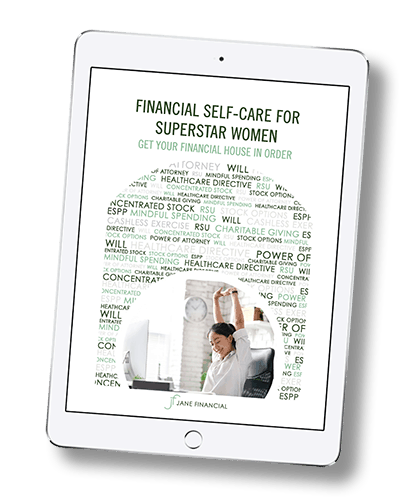Mortgages 101 for First-Time Home Buyers
Mortgages are a hot topic in the news. Rates are at an all-time low. If you have homeowner friends, they’re likely refinancing (replacing their mortgage with a new one at a lower rate).
If you’re shopping for your first home, I recently described how to prepare for the home buying process. Today’s post is about mortgages:
- Rates
- Mortgage types
- Loan costs/fees
- How loan officers think
- What to do before you start house shopping
Mortgage Rates
Mortgage rates hit record lows in early and late July 2020, averaging as low as 2.87% for 30-year fixed rate mortgages, the most popular product. Rates are lower the worse the economic outlook. If you’re fortunate to be in a financial position to buy a home, a (small) silver lining to COVID is low mortgage rates.
For historical context, the average 30-year fixed-rate mortgage is 8.0% for 1971-2019.
When my parents bought their first home in 1980, the average mortgage rate was 13.74%!

Me at 16 months old. I’m standing in the backyard of my parents’ first home in 1980. Note the pants pulled up to my armpits.
If you’re a financial history nerd, this was the era of “stagflation”:
- Inflation (price increases) was unsustainably high at 10%.
- Paul Volcker, then the Chair of the Federal Reserve, boldly doubled interest rates (specifically the “fed funds rate”) from 10.25% to 20% in 1980.
- This successfully reduced inflation, and also triggered a recession (the “stag” in “stagflation”).
Mortgage Types
There are two broad categories of mortgages: conventional loans, and government-backed loans. We’ll mainly focus on conventional loans.
Conventional loans
When financial institutions lend money, they actually don’t keep the loans they make in their portfolio. Instead, they sell the loans to investors on the secondary mortgage market. Two financial services corporations created Congress are the largest buyers:
- Fannie Mae (FNMA, or the Federal National Mortgage Association)
- Freddie Mac (FHLMC, or the Federal Home Loan Mortgage Corporation)
Conforming vs. non-conforming loans
The secondary mortgage market only buys certain mortgages. These mortgages are known as conforming loans. Fannie Mae and Freddie Mac will only buy loans that are either:
- < $510,400, or
- < $765,600. This higher limit is for single-family homes in expensive housing markets like the Bay Area.
The benefits of a conforming loan include:
- Lower mortgage interest rate
- Greater number of lenders, which makes it easier to shop for the best rate
When a conventional loan is greater than the two limits above, it’s called a nonconforming loan. A jumbo loan is a common type of nonconforming loan. You’ll need a high credit score (700 minimum). You’ll also need to provide additional documentation due to the size of the loan.
You can use this calculator to find the jumbo loan threshold in your county.
Fixed-Rate vs. Adjustable-Rate
Conventional loans can also be categorized by the type of interest rate.
Fixed-Rate Mortgages offer a fixed interest rate for the life of the loan. These mortgages are typically offered for 30-year or 15-year terms. 30-year fixed rate mortgages are the most common in the US.
Adjustable-Rate Mortgages (ARMs) have an interest rate that changes over the life of the loan. Typically ARMs start at a fixed rate, and then adjusts for the remainder of the term. The fixed period is usually three, five, seven, or ten years.
For example, a “10/1 ARM” has an interest rate that’s fixed for 10 years. Then in years 11-30, the interest rate adjusts annually.
Interest-Only Mortgages. You pay only interest (not principal) at a fixed rate for a set period (usually five, seven, or ten years). After that set period, the remainder of the mortgage with a combination of principal and interest payments, and the interest rate adjusts usually annually.
Government-backed loans
Government-backed loans tend to have more flexible borrowing requirements, smaller down payments, and less-stringent credit requirements.
There are three different types of government-backed loans:
- FHA Loans. The Federal Housing Association backs these loans. Lenders are willing to make FHA loans because of the FHA’s protection in the event of a homeowner defaulting on the loan.
- VA Loans. The Department of Veteran Affairs guarantees these loans. They are specifically for veterans and make it easier for them to buy homes. No down payment is required.
- USDA Loans. The US Department of Agriculture insures these loans. USDA loans are loans for buyers who want to purchase a home in a rural area.
Loan Costs
Closing Costs
You must pay fees to apply for, process, and close a mortgage. There are three categories of closing costs:
- Lender charges: origination fee, discount points (see next section for an explanation)
- Third-party charges: title insurance, escrow fees, home appraisal
- Prepaid items: 6-12 months of property taxes and homeowner/condo insurance
Estimate closing costs as 1% of your home’s purchase price. If you pay discount points, your closing costs will be higher. You have to pay these costs out of pocket. You can’t roll the closing costs into the loan amount; this is only allowed for mortgage refinances.
This is a great article from The Mortgage Reports if you want to learn more about closing costs.
Discount Points (and Lender Credits)
Discount Points are an optional upfront fee to lower your mortgage rate. Paying points lowers your interest rate relative to the interest rate you could get with a zero-point loan at the same lender.
“One point” equals 1% of the loan. For example, paying one discount point on a $100,000 loan equals $1,000 (1% * $100,000). Points don’t have to be round numbers. For example, you can pay 1.375 points, or $1,375 (1.375% * $100,000).
If you choose to pay points, your closing costs will increase.
Lender credits are negative discount points. The lender gives you money to cover your closing costs. But in exchange, you’ll pay a higher interest rate. You have lower upfront costs, but you’ll pay higher interest expenses over the life of the mortgage.
Mortgage Insurance
If your down payment < 20% of the house price, mortgage insurance will apply. Mortgage insurance protects the lender (not you!) in case you fall behind on your mortgage payments. Lenders view applicants with smaller down payments as a higher risk. Mortgage insurance lowers the risk to the lender, and you can qualify for a loan that you might not otherwise be able to get.
Mortgage insurance increases the cost of your loan. If you’re required to pay mortgage insurance, the monthly premium is usually tacked onto your monthly mortgage payment.
If you get a conventional loan, your lender will arrange for mortgage insurance with a private company. Private mortgage insurance (PMI) rates depend on your credit score and the size of your down payment.
The Consumer Financial Protection Bureau (CFPB) has a great article on mortgage insurance and other personal finance topics.
How loan officers think
In my previous post on buying your first home, I described how loan officers determine what’s an affordable house purchase:
- Home expenses must be < 28% of income
- Debt payments must be < 36% of income
What to do before you start house shopping
Remote work is our reality for the foreseeable future. Most of my clients live in small and expensive city apartments, and they’re interested in buying their first home. I’m advising them to prepare in advance:
Check your credit score. A high credit score (750+) will allow you to qualify for a low mortgage rate. If you want to boost your score, this NerdWallet article has some helpful tips.
Get a mortgage pre-approval. A lender reviews your finances to determine how much you’d be able to borrow to buy a home. The pre-approval process will not impact your credit score. Some realtors may ask upfront for a mortgage pre-approval letter, especially in competitive real estate markets.
Contact several lenders. You may see a wide range in mortgage rates, so it pays to shop around.





